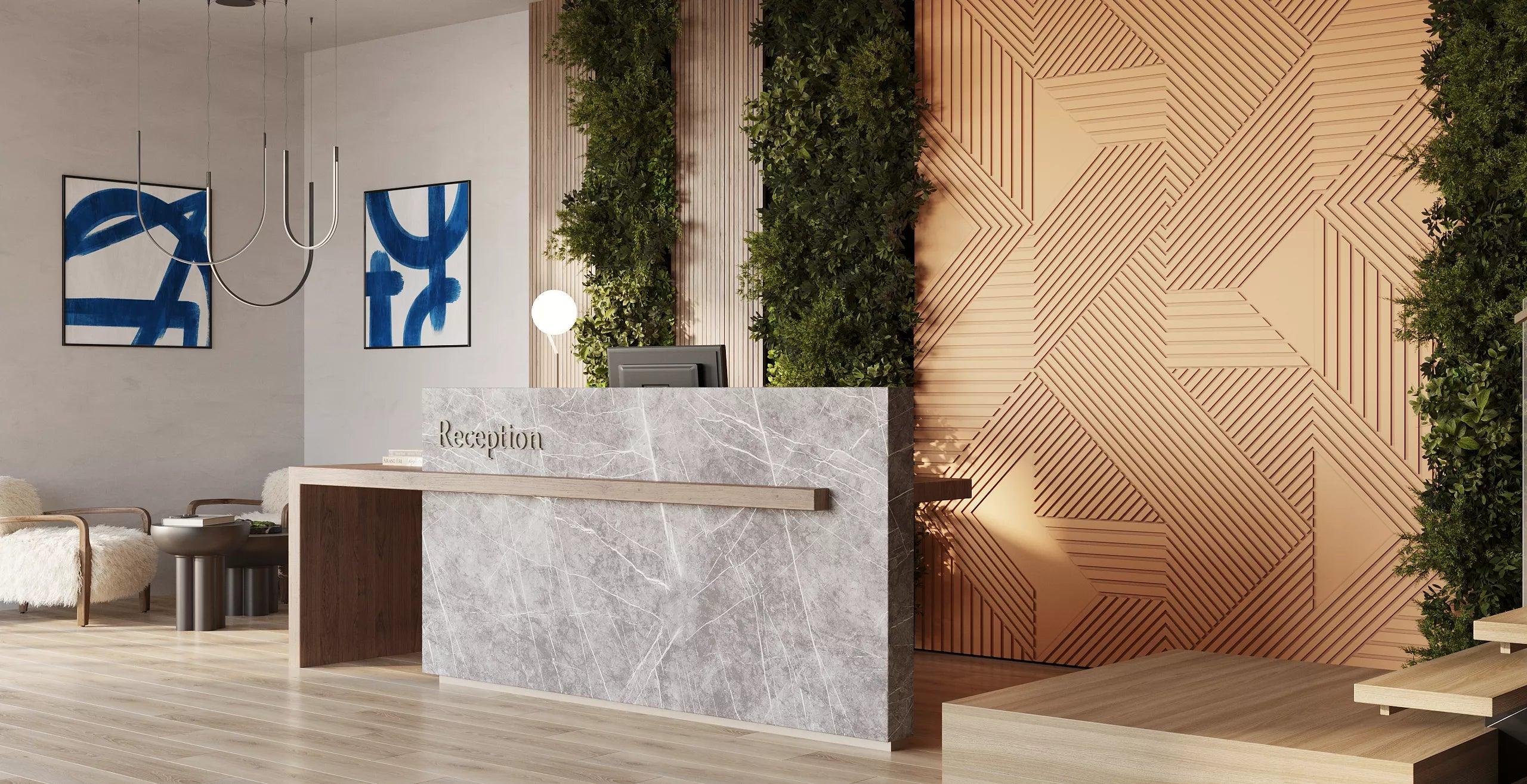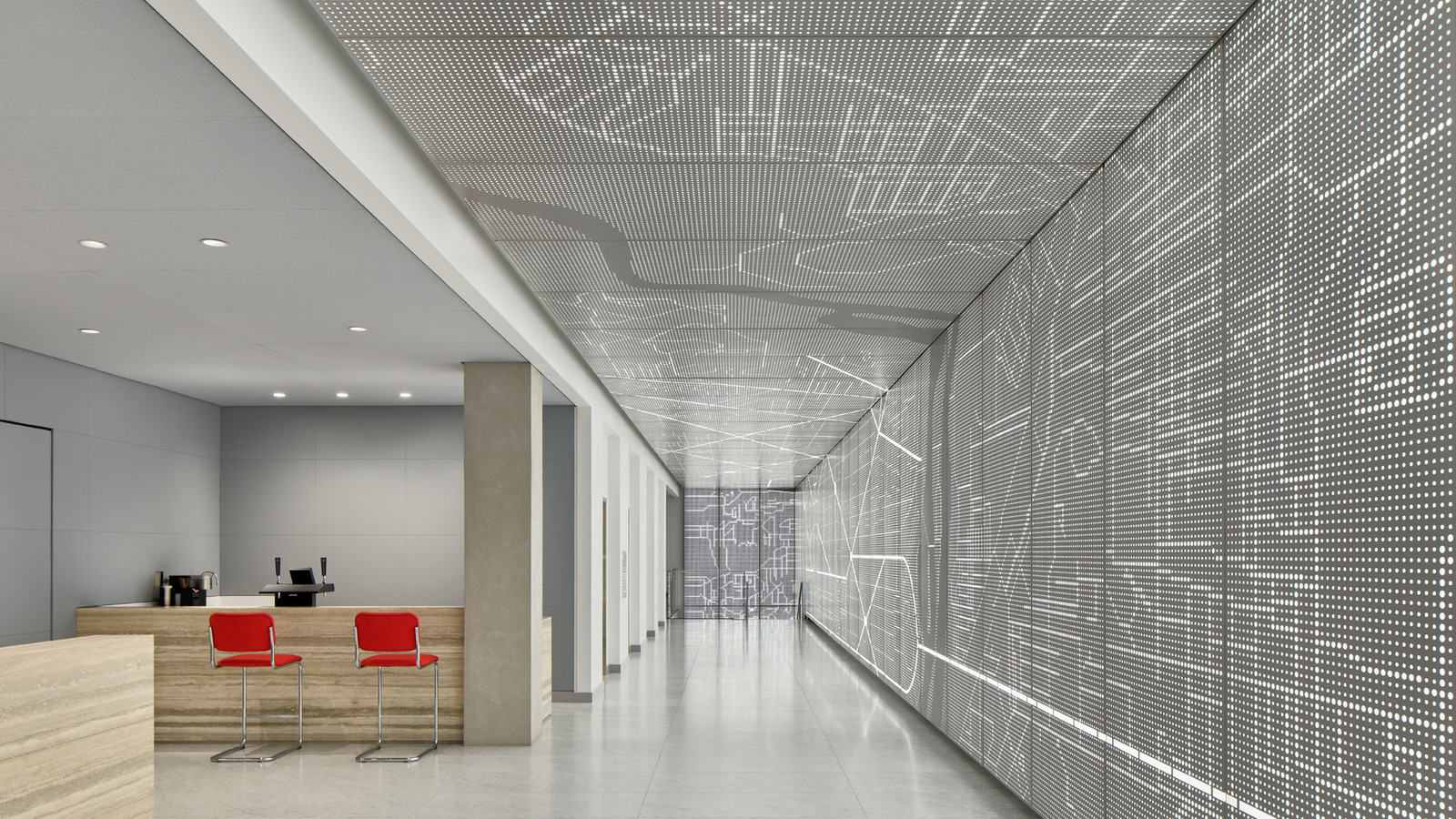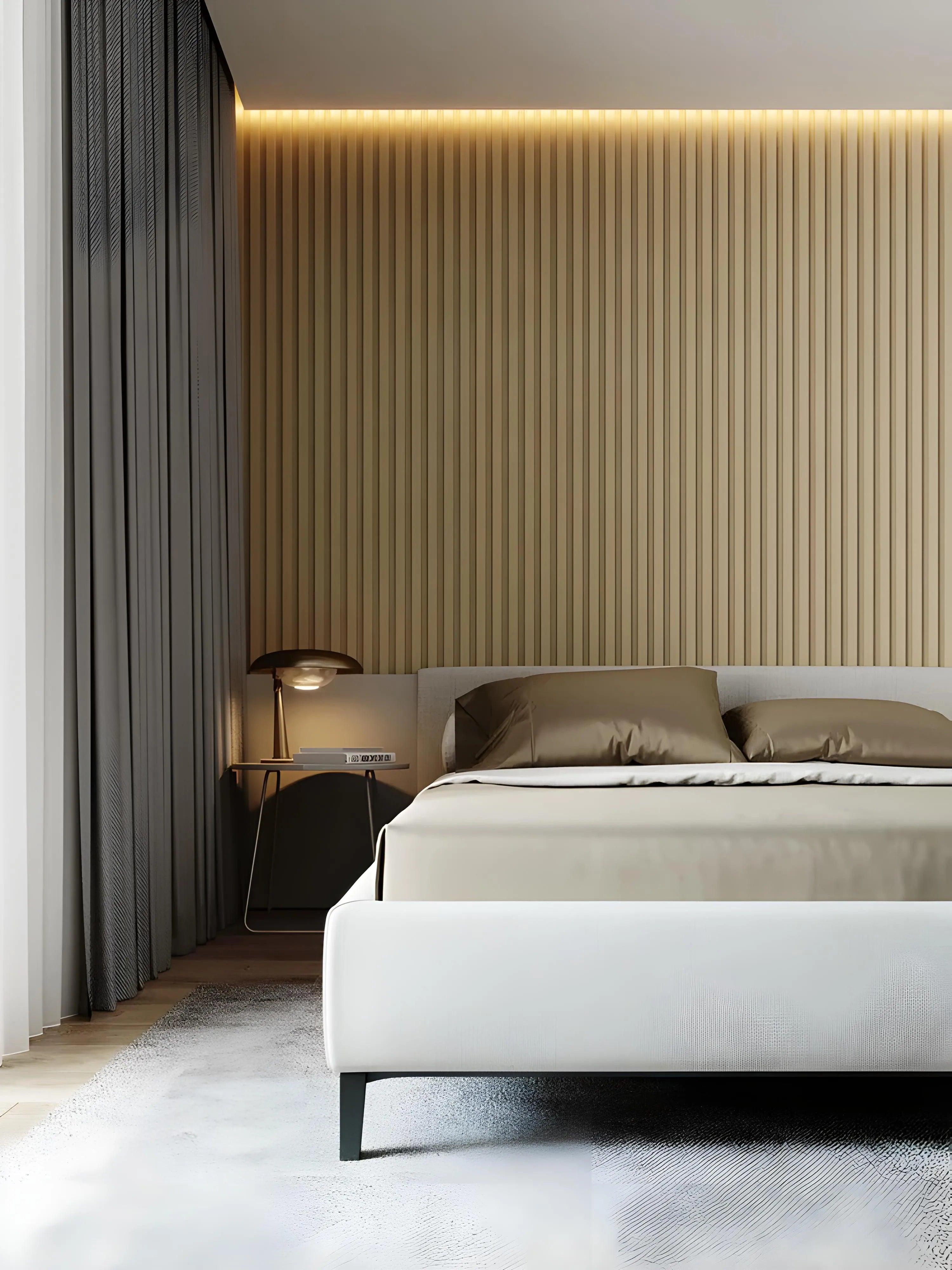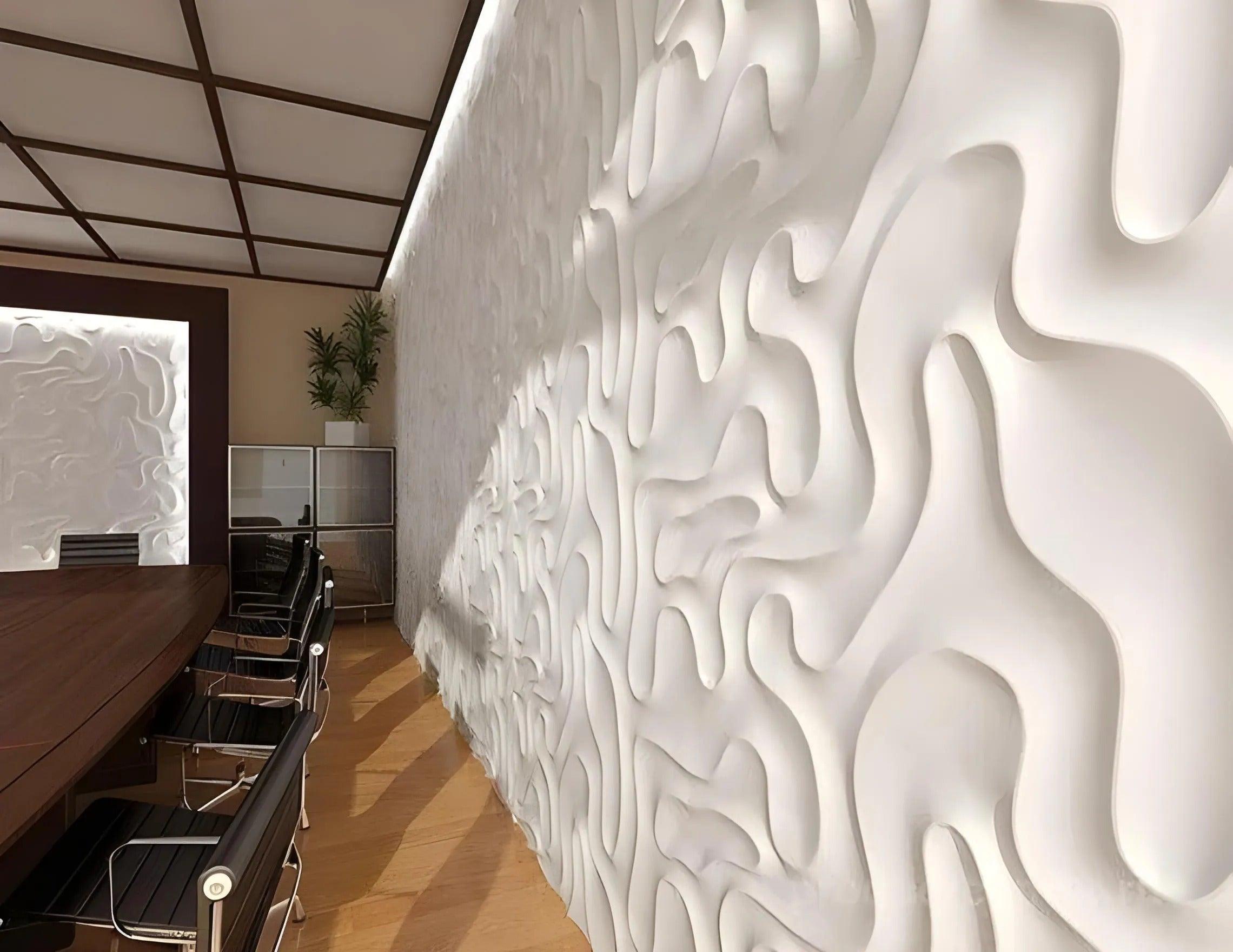Table of Contents
- Introduction: Why Wall Panels Are a Popular Choice
- 1. Overview of Wall Panel Materials
- 2. Comprehensive Comparison of Wall Panel Materials
- 3. Popular Patterns and Styles Across Wall Panel Types
- 4. Installation Complexity
- 5. Choosing the Right Wall Panel for Your Space
- 6. Conclusion: Elevating Interiors with the Perfect Wall Panels
Introduction: Why Wall Panels Are a Popular Choice
Wall panels have become a staple in modern interior design, offering an innovative way to enhance both the aesthetics and functionality of a space. Unlike paint or wallpaper, wall panels bring depth, texture, and dimension, turning plain walls into striking focal points. Their versatility has made them a popular choice for homeowners, designers, and architects alike.
What sets wall panels apart is their ability to meet a variety of design needs. Whether you're creating a sleek, minimalist look, adding warmth and texture, or improving acoustics, there’s a wall panel option for every purpose. From durable gypsum panels to stylish wood designs and the growing trend of felt panels, the wide range of materials ensures you can tailor your walls to fit your personal style and functional requirements.
Wall panels aren’t just about aesthetics—they also serve practical purposes. Many materials offer benefits like sound absorption, durability, and even insulation, making them ideal for spaces that demand more than just good looks. Additionally, modern panels often come with options for customization, such as paintability or LED integration, allowing you to create a truly unique and personalized interior.
In this blog, we’ll explore the different types of wall panels, compare their features, and help you understand the pros and cons of each material. Whether you’re redesigning a living room, upgrading a gaming space, or refining an office, wall panels provide endless opportunities to elevate your space with both style and substance.
1. Overview of Wall Panel Materials
When it comes to choosing wall panels, understanding the unique properties of each material is essential. From classic gypsum to modern felt panels, each option offers distinct advantages and limitations. Here’s a breakdown of the most popular materials to help you make an informed choice:

1. Gypsum / Plaster Panels
Overview: Gypsum panels are a top choice for modern interiors due to their sleek appearance, durability, and versatility. Made from natural gypsum, an organic material, these panels are commonly used for creating smooth, elegant finishes. When produced by top reliable and certified manufacturers like Kandes, gypsum panels can be non-combustible, offering superior fire resistance and safety. However, some manufacturers may use synthetic additives that could affect the panels’ combustibility and increase toxicity in the event of a fire. Choosing high-quality panels ensures both exceptional aesthetics and peace of mind.
Key Features:
- Durable and long-lasting.
- Moderate sound absorption, reducing echoes.
- Paintable and easy to customize for any design.
- Fire-resistant (when produced by certified brands) and low in VOCs, ensuring a safer indoor environment.
- Made from natural, organic materials for a more sustainable choice.
Best For: Sophisticated spaces like living rooms, gaming rooms, offices, and commercial interiors.
Price Range: Moderate to high, depending on design and customization.
2. Wood Panels
Overview: Wood panels bring warmth and a natural element to interiors. They are available in various finishes, from rustic to sleek and contemporary.
Key Features:
- Aesthetic versatility with rich textures.
- Moderate durability; requires maintenance to prevent warping or damage.
- May not offer significant sound absorption but pairs well with acoustic treatments.
Best For: Spaces aiming for a cozy or natural ambiance, such as bedrooms or libraries.
Price Range: Moderate to high, depending on wood type and finish.
3. PVC Panels
Overview: PVC panels are lightweight, affordable, and moisture-resistant, making them a practical choice for budget-conscious projects or areas exposed to humidity.
Key Features:
- Easy to install with minimal tools.
- Available in various patterns, including wood and stone-like finishes.
- Minimal sound absorption and may emit VOCs; ensure low-emission options.
Best For: Bathrooms, kitchens, or utility rooms.
Price Range: Low to moderate.
4. Foam Panels
Overview: Foam panels are designed primarily for acoustic treatment, offering excellent sound absorption. They are lightweight and easy to install, making them a practical option for sound-focused environments.
Key Features:
- Exceptional acoustic properties.
- Lightweight but less durable than other materials.
- Available in simple, functional designs.
Best For: Home theaters, recording studios, or gaming rooms prioritizing sound quality.
Price Range: Low to moderate.
5. Metal Panels
Overview: Metal panels are a bold choice, adding an industrial or modern edge to interiors. They are highly durable and available in various finishes, from brushed steel to anodized aluminum.
Key Features:
- Extremely durable and fire-resistant.
- Reflective surfaces, not ideal for acoustic control.
- Minimal maintenance required.
Best For: Industrial-style spaces or modern kitchens.
Price Range: Moderate to high.
6. Felt Panels
Overview: Felt panels are an emerging trend in interior design, combining style with excellent acoustic properties. Made from compressed fibers, they’re often used to create visually appealing, sound-friendly spaces.
Key Features:
- Superior sound absorption, ideal for acoustic control.
- Soft, tactile surfaces available in vibrant colors and patterns.
- Lightweight and easy to install.
Best For: Offices, gaming rooms, or creative spaces seeking both function and flair.
Price Range: Moderate to high.
7. Concrete Panels
Overview: Concrete panels add a contemporary, urban vibe to interiors, offering a raw, industrial aesthetic. Despite their robust appearance, they are often lightweight due to composite manufacturing techniques.
Key Features:
- Extremely durable and weather-resistant.
- Adds a modern, edgy aesthetic.
- Minimal sound absorption; best paired with additional acoustic treatments.
Best For: Industrial-style living rooms or commercial spaces.
Price Range: High.
2. Comprehensive Comparison of Wall Panel Materials: Features, Benefits, and Applications
| Material | Durability | Sound Absorption | Aesthetic Appeal | Ease of Cleaning & Maintenance | Material Type (Organic/Not) | Price Point | Fire Resistance | Customization (Paint/Cut/LED) | Suitable Design Styles |
|---|---|---|---|---|---|---|---|---|---|
| Gypsum Panels | High | Moderate (reduces echo) | Sleek, versatile, and high-end; paint options allow for warm, inviting aesthetics | Easy to clean; low maintenance | Organic | Moderate to High | Fire-resistant (low-VOC) | Paintable, cuttable, LED integration possible | Modern, Minimalist, Contemporary, Scandinavian, Transitional, Creative Spaces, Commercial Spaces |
| Wood Panels | Moderate to High | Low | Warm, natural aesthetic with a variety of textures and finishes | Requires occasional treatment to prevent warping or damage | Organic | Moderate to High | Limited fire resistance, depends on treatment | Paintable, can be cut, limited LED integration | Rustic, Scandinavian, Mid-Century Modern, Industrial |
| PVC Panels | Moderate | Minimal | Wide variety, including wood and stone-like finishes | Easy to clean; low maintenance | Not organic | Low to Moderate | Non-combustible (if certified) | Limited paint options, can be cut, LED compatible | Modern, Utility, Contemporary |
| Foam Panels | Low | Excellent | Simple, functional designs suited for acoustic needs | Easy to clean but prone to damage | Not organic | Low | Varies; not inherently fire-resistant | Limited paintability, not cuttable, no LED compatibility | Home Theaters, Gaming Rooms, Recording Studios |
| Metal Panels | High | Minimal | Sleek, industrial, and modern with reflective surfaces | Very easy to clean; low maintenance | Not organic | Moderate to High | Fire-resistant | Not paintable, cuttable with tools, no LED integration | Industrial, Modern, Urban |
| Felt Panels | Moderate | Excellent | Soft, tactile, and vibrant; ideal for acoustic and visual flair | Collects dust; difficult to clean | Organic (natural/composite fibers) | Moderate to High | Limited fire resistance, depends on material | Limited paint options, not cuttable, no LED compatibility | Modern, Creative Spaces, Office Design |
| Concrete Panels | Very High | Minimal | Raw, industrial aesthetic with bold, textured appeal | Easy to clean; low maintenance | Not organic | High | Fire-resistant | Not paintable, cuttable with tools, limited LED integration | Industrial, Urban, Contemporary |
3. Popular Patterns and Styles Across Wall Panel Types
Wall panels are not just about materials—they’re also defined by the patterns and styles they bring to a space. Choosing the right design can dramatically impact the room’s atmosphere, adding texture, depth, and personality. Here’s a look at popular patterns and styles and how they work across different wall panel types:
1. Slat Panels
Overview: Slat 3D Wall Panels feature clean, linear designs that add structure and modernity to a space. Available in horizontal or vertical configurations, they create a sleek and minimalistic aesthetic that works well in contemporary and Scandinavian interiors.
Best Materials:
- Wood: Offers warmth and natural textures.
- Gypsum: Provides a modern, polished finish and can be paired with LED lighting for added ambiance.
-
PVC: Mimics the look of wood or gypsum with easier maintenance.
Applications: Living rooms, gaming rooms, and offices aiming for a refined yet functional look.
2. Geometric Patterns
Overview: Geometric 3D Wall Panels are bold and eye-catching, incorporating shapes like hexagons, triangles, and diamonds to create dynamic, statement-making walls. They bring energy and personality to a space, making them ideal as accent features.
Best Materials:
- Gypsum: Sharp lines and smooth finishes elevate geometric designs.
- Metal: Adds an industrial edge with reflective surfaces.
-
PVC: Affordable and lightweight, great for geometric patterns in modern spaces.
Applications: Accent walls in gaming rooms, creative studios, and modern commercial spaces.
3. Organic Patterns
Overview: Organic patterns of the 3D Wall Panels feature flowing lines and natural textures, mimicking elements like waves, ripples, or foliage. These designs create a calming, tranquil atmosphere that’s perfect for spaces focused on relaxation or creativity.
Best Materials:
- Gypsum: Provides smooth, elegant organic patterns.
- Felt: Soft textures enhance the natural, organic feel.
-
Concrete: Offers a raw, modern interpretation of organic forms.
Applications: Bedrooms, wellness spaces, and creative offices.
4. Textured Surfaces
Overview: Textured 3D Wall Panels add depth and tactile appeal, with finishes ranging from stone and brick to leather and fabric-like effects. They bring character and richness to interiors, especially in industrial or rustic designs.
Best Materials:
- Concrete: Bold, industrial aesthetics.
- Wood: Adds natural, tactile appeal.
-
PVC: Mimics high-end textures affordably.
Applications: Rustic living rooms, industrial kitchens, and urban commercial spaces.
5. Decorative Relief Patterns
Overview: These panels feature intricate, raised designs that add an artistic element to walls. They’re ideal for luxurious interiors or spaces looking for a touch of drama.
Best Materials:
- Gypsum: Intricate detailing with a smooth, premium finish.
-
Metal: Modern, polished designs with a reflective quality.
Applications: Luxury hotels, upscale offices, and stylish dining areas.
Choosing the Right Pattern for Your Space
- Minimalist and Modern Spaces: Opt for slat panels or simple geometric designs for clean, streamlined aesthetics.
- Bold and Creative Spaces: Go for textured or relief patterns to add drama and character.
- Relaxed and Natural Spaces: Choose organic patterns or felt panels for a calming ambiance.
4. Installation Complexity

Summary: Balancing Ease and Creativity
- Simple and Quick Installations: PVC and foam panels are the go-to materials for DIYers looking for ease and speed.
- Custom and High-End Projects: Gypsum, wood, and metal panels shine when professionally installed, offering more advanced customization options like LED integration and intricate designs.
- Heavy-Duty Applications: Concrete panels require professional expertise but provide a bold and durable finish for industrial or modern interiors.
5. Choosing the Right Wall Panel for Your Space
Selecting the perfect wall panel involves more than just picking a design or material—you need to balance aesthetics, functionality, and practicality. Here’s a guide to help you make an informed decision:
Factors to Consider
-
Budget
- Wall panels come in a wide price range. PVC and foam panels are budget-friendly, while gypsum, wood, and concrete panels cater to higher-end designs.
- Consider not just the cost of the material but also installation expenses and maintenance needs.
-
Functionality
- Sound Absorption: If acoustic performance is a priority, opt for gypsum, felt, or foam panels.
- Durability: For long-lasting walls in high-traffic areas, gypsum, wood, and concrete are excellent options.
- Fire Resistance: Choose non-combustible materials like gypsum or fire-rated PVC panels for added safety.
-
Design Preferences
- Minimalist and sleek? Slat-style gypsum or PVC panels work well.
- Warm and natural? Wood panels provide richness and texture.
- Bold and industrial? Metal or concrete panels create statement walls.
-
Ease of Maintenance
- Consider how much cleaning and upkeep the panels will require. For instance, PVC panels are easy to maintain, while felt panels may collect dust and need more care.
-
LED Integration and Customization
- If you want integrated lighting, gypsum or PVC panels are great choices. Paintability and cutability are also factors to think about if customization is essential.
Best Applications for Each Type of Wall Panel

6. Conclusion: Elevating Interiors with the Perfect Wall Panels
Wall panels are more than just a decorative choice—they’re a powerful way to combine functionality with design. From the versatility of gypsum panels to the boldness of concrete, each material brings unique benefits that cater to different needs and styles.
When selecting wall panels, focus on your priorities: durability, acoustic properties, customization options, or fire resistance. Pair these with your design goals to create a space that’s not only visually stunning but also practical and long-lasting.
Whether you’re upgrading your living room, designing a modern gaming space, or transforming a commercial interior, the right wall panels can elevate your project to a whole new level. With thoughtful choices and quality materials, your walls will do more than define your space—they’ll inspire it.









Share: